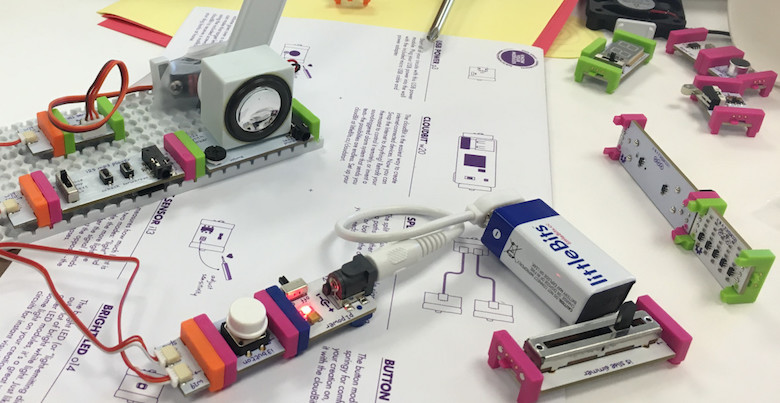Introduction
Recent materialist, posthumanist, and ecological developments in rhetoric, composition, and technical communication have turned toward incorporating maker approaches and material, three-dimensional objects into writing and rhetoric classes. While the written word certainly maintains a significant place in our research and teaching, we must no longer ignore that the things we encounter and create have great rhetorical power—and great pedagogical potential for rhetorical practice (Barnett & Boyle, 2016; Sheridan, 2010; Shipka, 2011). Rhetoricians like Richard Buchanan (1985) have argued "that our understanding of rhetoric has been limited to the rhetoric of words, but that the vast output of man-made objects in the present represents another, unrecognized mode of communication, a rhetoric of things" (p. 18). And compositionists like David Michael Sheridan (2010, 2016) and Jody Shipka (2011) have advocated for the potential of using three-dimensional objects in rhetoric and composition courses, arguing for the educational possibilities of students gaining rhetorical practice with material objects.
This webtext argues for the usefulness of maker approaches to rhetorical education by sharing our experiences in an intensive two-week graduate course on New Media Rhetoric at Texas Tech University. In this course, students played and experimented with littleBits in order to create three-dimensional objects, and they documented their practices in order to create new media technical communication about using littleBits in pedagogical settings. We suggest that play and experimentation are critical components of inventional processes. As educators, we are tasked with finding methods of challenging our students to attend to the world around them, to analyze their environments, and to explore social problems and invent contingent responses to those problems. littleBits and similar modular three-dimensional objects provide rhetoric, composition, and technical communication teachers with opportunities to explore rhetorical composition as a practice involving play, failure, and craft.
littleBits are pieces of small circuitry that snap together with magnets, allowing users to easily create machines by combining various modules (sometimes with other material objects). Because littleBits modules snap together easily, they require no technical expertise like soldering or computer programming and thus allow for play and experimentation with a low threshold for entry. The mission of littleBits is "to democratize hardware by empowering everyone to create inventions, large and small, with our platform of easy-to-use electronic building blocks" (Mission, 2016, emphasis original). Designed for children ages eight and up, littleBits are delivered in kits that allow users to either follow directions in creating stock inventions (like remote control cars, fans, and wireless networks) or to create their own, new inventions.

In this way, littleBits function as three-dimensional commonplaces or readymades, which Geoffrey Sirc (2002) has persuasively argued should be central to composition. In recovering commonplaces from their denigrated position in composition studies—"Always rarified, reshaped, made over, Composition stubbornly rejects the readymade" (p. 279)—Sirc argued that commonplaces are central to composing and inventional processes: "It is the commonplace that proves most useful in attuning perception: the rich poverty of the everyday helps cultivate a useful principle of forced selectivity" (p. 281). We argue that three-dimensional objects like littleBits can serve as commonplace media for students to work and play with in order to craft persuasive new media objects and to explore the dynamics of composing in and with new media.
Modular three-dimensional objects, we argue, provide opportunities to introduce new media to students in ways that disrupt their conventional practices of invention; provide opportunities to explore rhetorical practice as play, failure, and risk-taking; refigure creation as remix and craft; and yet still meet the traditional goals of rhetoric, composition, and technical communication classes in creating rhetorical products that do things in the world. With such a versatile medium to work with, students in our New Media Rhetoric course got to play, experiment with, invent, and create both electronics and knowledge. In this webtext, we share our experiences using littleBits in a rhetoric and technical communication graduate course. We begin by situating this pedagogical project within scholarship on multimodal and new media composition practices, maker rhetoric, and ecological approaches to rhetoric that emphasize practice, play, failure, and craft; we then provide some context of the course and some background on littleBits.
The rest of this webtext is structured according to a heuristic that arose as students experimented with littleBits and created documentation for littleBits in this class. We contextualize, theorize, and share our experiences playing, creating, disrupting, and redesigning using littleBits:
- Play: We begin with the concept of play in education, discussing the importance of students' understanding that failure is integral to learning. We share our processes of playing and experimenting with littleBits and how practice as play involves recurrent, serial failure and risk-taking.
- Create: Following Sirc (2002) and Johndan Johnson-Eilola and Stuart Selber (2007), we too reconfigure creating as remix, assemblage, and craft. This section explores our crafting with littleBits as "filtering, recombining, remixing, and making of assemblages" (Johnson-Eilola & Selber, 2007, p. 400).
- Disrupt: In this section, we turn to questions of standardization and craft, asking what it means to be disruptive when composing with standardized, mass-manufactured modular tools. We propose a model of purposeful failure that involves play—akin to Matt Ratto's (2011) concept of critical making—and we share the process of creating an automated "study station" that intentionally fails at its purported goal: making studying easier by automating processes.
- Redesign: Following our discussion of rhetorical practice as a matter of play, risk, and failure, and our reframing of creation as remixing and craft, we show how these practices still fit into traditional technical communication course goals. We share our experience redesigning some of littleBits's official documentation: Drawing on our experiences playing and crafting, we critique that documentation and share how we went about creating new instructional documentation.
In our conclusion, we draw implications for using three-dimensional modular tools in rhetoric, composition, and technical communication courses.